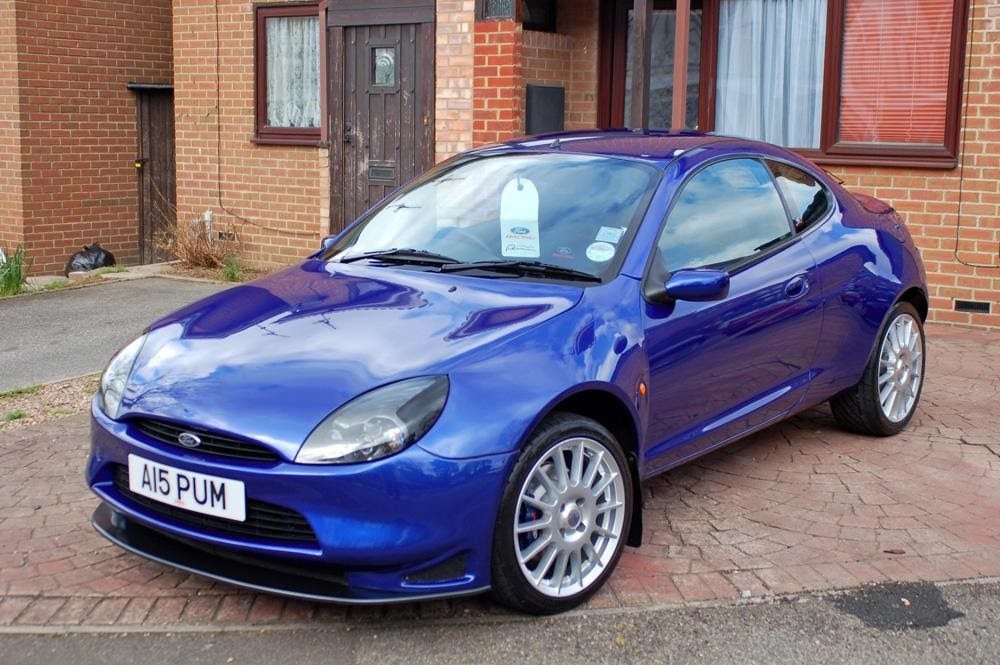
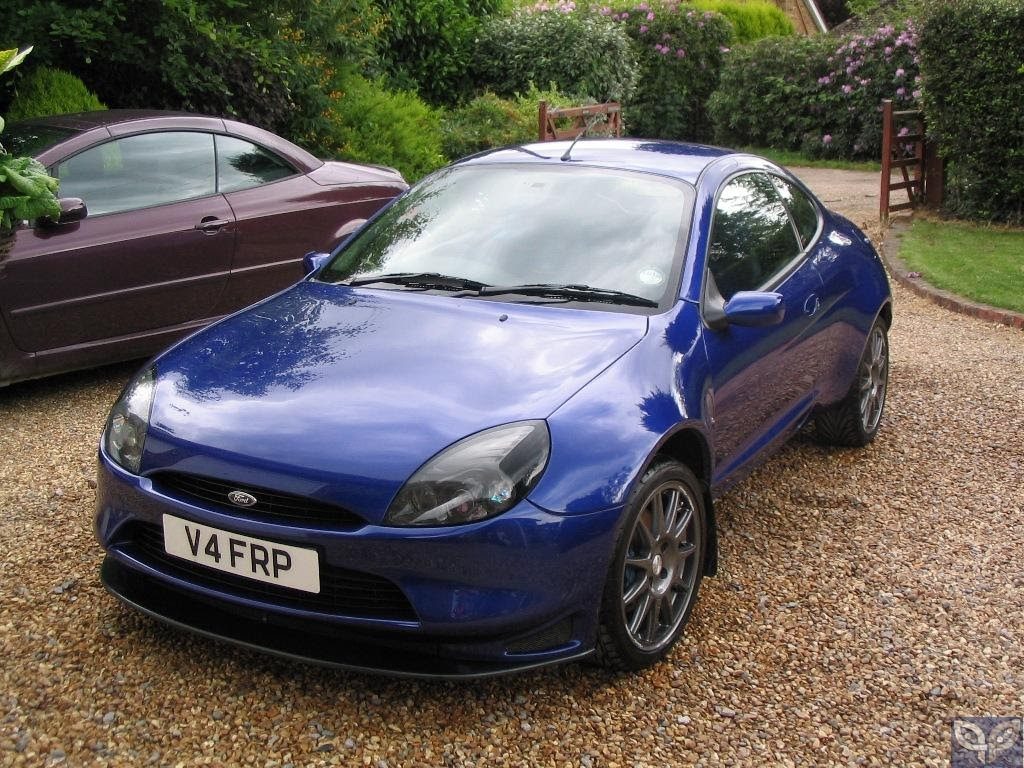
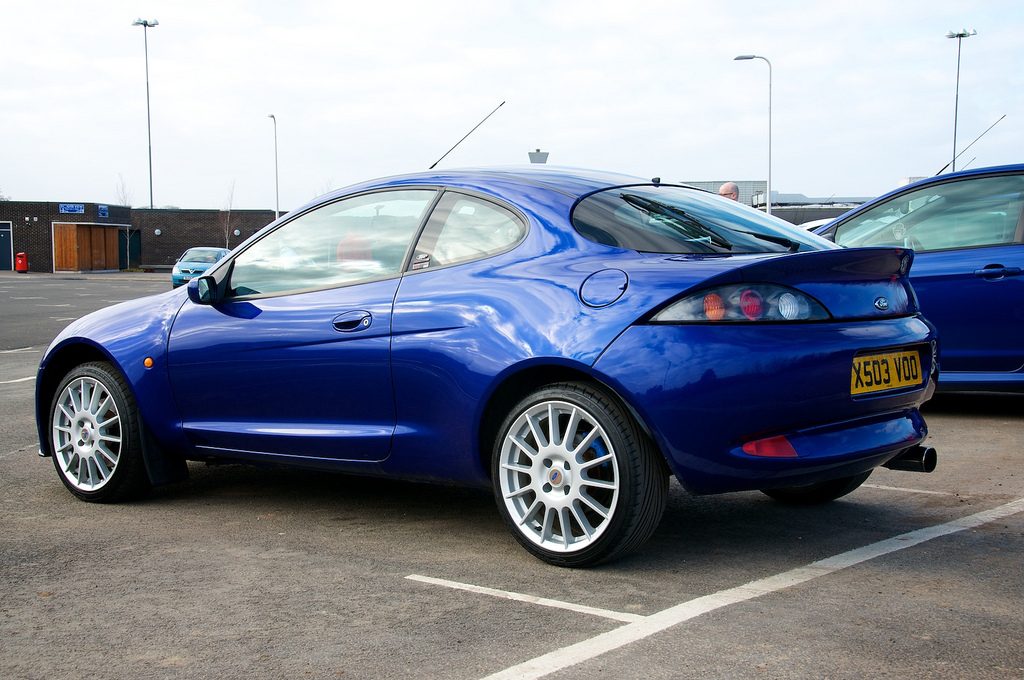
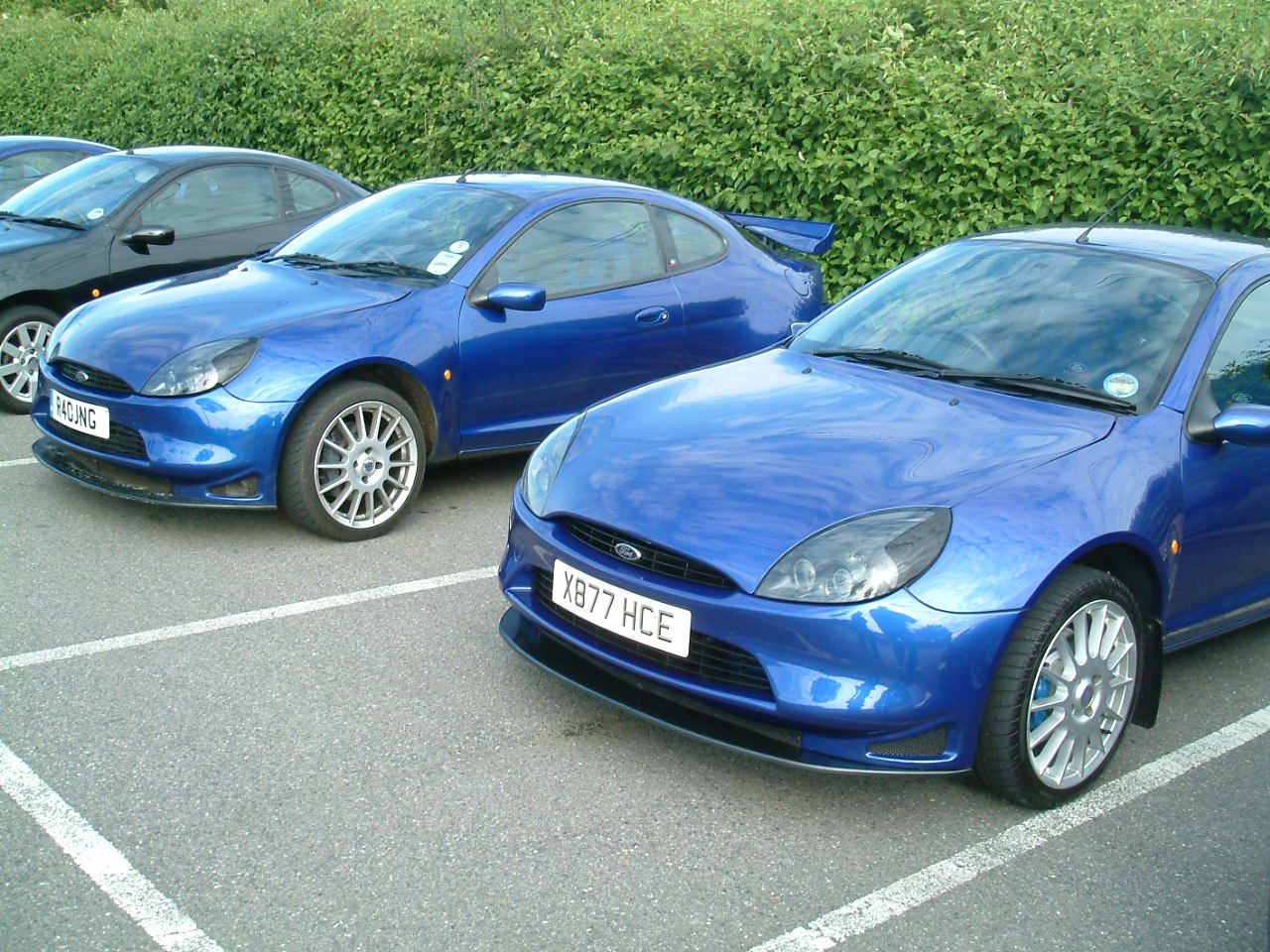
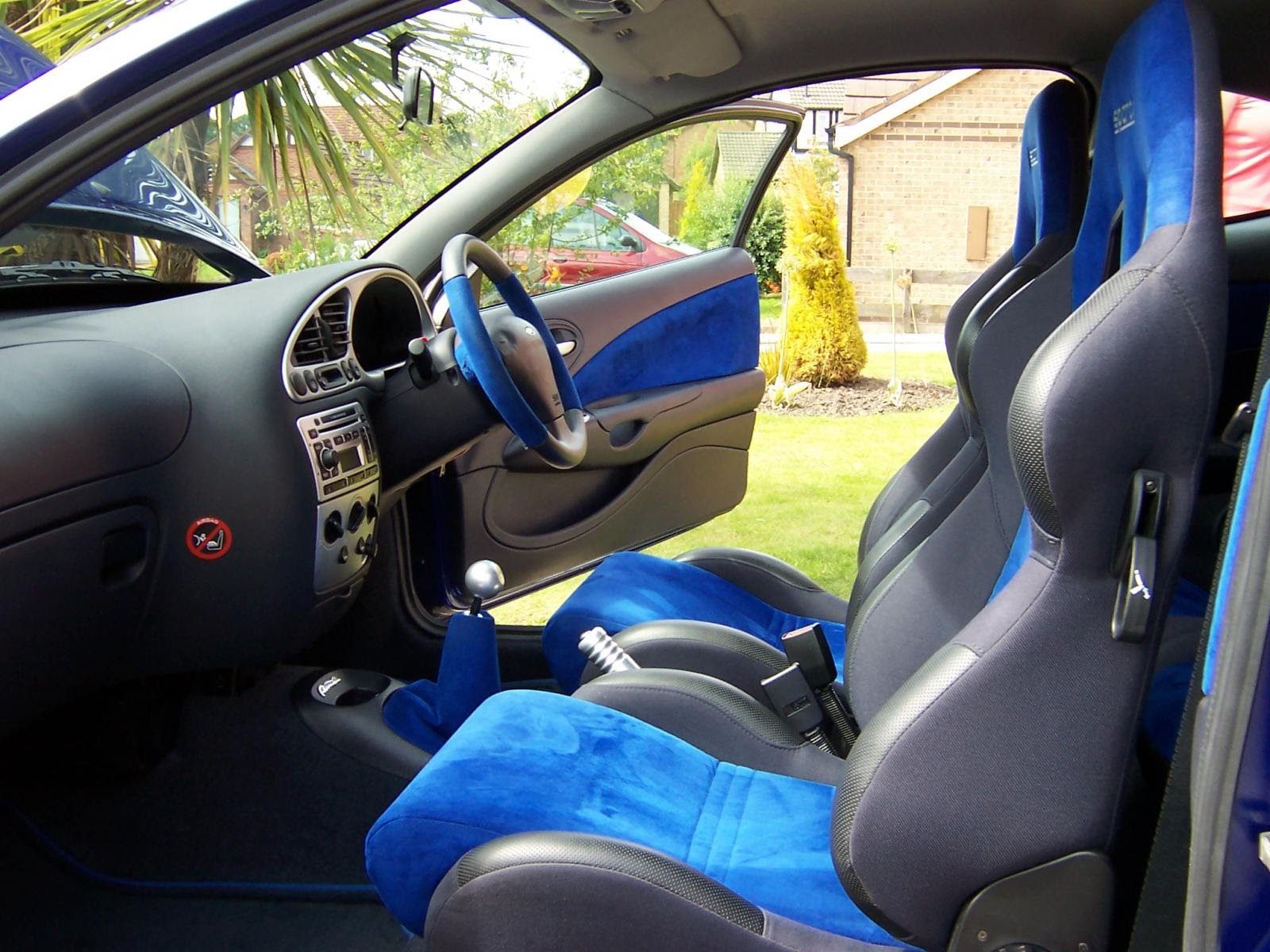
Quantity produced: 500 (all numbered on inlet manifold)
Years available: 1999(V) to 2001(51)
The Ford Racing Puma was the name eventually given to Ford's concept Puma, the Puma RS, which was first unveiled to the public at the 1999 Geneva Motorshow.[9] At the time, Ford were keen to stress that this was no mere styling job and the idea was to transfer the know-how and technology learned directly from Ford Puma race and rally programmes to a road car. It was created by the Ford Rally specialist team at Boreham. The strictly limited production run was initially pencilled to run for 1000 units, with 500 destined for the German market, and 500 for the UK. All conversions were carried out by Tickford, Daventry UK.[10] In the end, only the 500 destined for the UK market were produced and sold.
Less than half of the 500 cars were actually sold directly to customers, with the vehicle's high price (£23,000 when new) often cited as a reason, as rival performance cars such as the Subaru Impreza (with an additional 50+ BHP/Turbo, four-wheel-drive and rallying pedigree) were being offered for a maximum of £21,000 with the optional Pro Drive pack. The lower than anticipated demand had Ford offering Racing Pumas to senior managers through their MRC scheme, which enabled cars to continue being registered and converted. The lack of demand when brand new has actually paid off in the longer-term, as the rarity of the Racing Puma has allowed it to maintain an increased value over the standard Puma.
Race braking system[edit]
For the Racing Puma, Ford partnered with Alcon Design to produce a 4-Piston Motorsport braking system. The Alcon Racing Front Brake callipers use 295 mm (11.6 in) x 28mm discs (270mm discs on the rear). These brakes are one of the defining attributes of the Racing Puma and they contribute significantly to enabling the standard 1,174 kg (2,588 lb) car to pull a substantial 1.1g+ of braking force in the dry (this is the same braking g-forces performance as a Lamborghini Gallardo!).[11] This compares well to the normal Puma's ability to achieve 0.7g on regular, smaller, 258 mm (10.2 in) x 22 mm (0.9 in) brake discs and callipers.
The brake callipers themselves, being derived from a racing set-up, do not come fitted with any protective rubber boots which prevent brake dust and debris from coming into contact with the brake pistons. This means the brakes should be serviced regularly (fully dismantled and properly cleaned) to maintain efficiency. Furthermore the inner portions of the calliper were unpainted aluminium, and are susceptible to corrosion.
Bodywork and handling[edit]
The bodywork was beefed up with wider lightweight aluminium front and steel rear overhangs, these covered a substantially widened track at both the front and rear requiring longer drive shafts unique to the Racing Puma. A front aerodynamic air splitter and modified wider front bumper with sports grill. The wheels are Speedline Corse Turini alloys; 17" x 7.5 (with an ET28 Offset) and use 215/40 17 tyres (original fitment tyres were Michelin SXGT 215/40 R17), this increases the width from 1674mm to 1770mm. The S1600 rally Puma is just 35mm wider than this.
The Racing Puma's suspension was developed and honed by Ford's specialist division at Boreham, Essex and the cars monocoque shell was originally designed to be Ford's WRC entrant. Stig Blomqvist spent months fine tuning a car's handling to ensure its chassis dynamics where perfected. The wider track, uprated springs, dampers and special geometry settings refined the cars cornering poise to another level beyond the standard cars already excellent handling. The upshot of the improved chassis finesse was a bias towards tracks and hence the car has a very firm ride..
All Racing Pumas left the factory painted metallic Imperial Blue to signify their special racing edition status. This colour was only used by Ford on a select range of cars such as the Ford Escort Cosworth and Mk.1 Ford Focus RS edition models. The colour was not available on the regular Pumas in the UK market.
Gearbox and optional limited slip differential[edit]
The standard IB5 gearbox was strengthened on the Racing Puma in comparison to the standard models. It contains modified shafts which have been shot peened to withstand the extra load placed upon them. This allowed a revised Power-train Control Module software to be used, allowing more power and torque to be used in lower gears.
Additionally, Ford Racing offered an optional limited slip differential to enhance handling even further, only 80 customer cars actually came equipped with an LSD from factory, but since then subsequent owners have been known to retrofit this option.
Racing inspired interior[edit]
Sparco were commissioned to provide high-grip bucket seats for improved driver control in cornering situations. The blue Alcantara trim used on the seats and steering wheel provided improved grip over other material types. The door cards, rear seats, and rear interior were also trimmed with the same material, and the front seats where embroidered with the Ford Racing emblem.
FRP engine[edit]
The original design remit was to achieve 180 bhp using a 1.7-litre Zetec SE equipped with a turbocharger. However, due to spiralling project costs, this was not achieved and eventually the Racing Puma engineers where forced to keep their changes within a normally aspirated engine. The majority of the engine remained unchanged from the 1.7 Zetec SE used in the standard Puma. Only the camshafts, air intake (with the unique edition number engraved on it), a specially tuned complete exhaust system by Janspeed, and a revised engine management software helped to increase power by 30 hp, reducing the 0-62 mph (100 km/h) time to 7.8 seconds. -->
https://en.wikipedia.org/wiki/Ford_Puma#Ford_Racing_Puma_.28FRP.29
